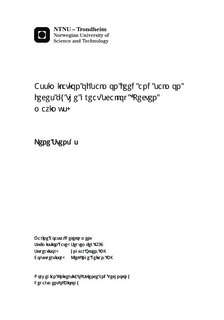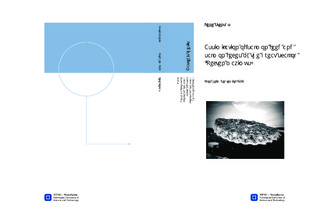| dc.description.abstract | The primary objective of this Master s thesis was to study if organic waste particles released from cage fish farms could be assimilated by the great scallop (P. maximus) through a laboratory trial and a field trial. In the laboratory experiment, scallops were co-fed salmon feed or salmon feces with algae at two different concentrations for 25 days. In the field study, scallops were installed in the sea for 3 months at four experimental stations close to a fish farm at the coast of western Norway (Florø).
The laboratory trial showed that phytoplankton was the most important part of the scallop s diet, resulting in better growth and condition. Scallops co-fed salmon feed or feces showed higher concentrations of 18:1 (n-9) in the digestive gland tissues compared to scallops fed algae alone. This suggested that scallops have utilized salmon feed and feces, due to the high amounts of 18:1 (n-9) in the supplemented feed. The scallops in the laboratory trial were found to incorporate phytoplankton over salmon feed and feces as long as algae were present in high amount. Less selectivity was observed when phytoplankton concentration was low.
The field study showed that the fatty acid signature in scallop digestive gland tissues, and to some degree gonad tissues, had high fractions of specific fatty acids found in high concentrations in diatoms (16:0, 16:1 n-7, EPA) and dinoflagellates (16:0, 18:4 n-3, EPA, DHA). This suggested that phytoplankton was an important part of the scallop s diet. Scallops cultivated under the influence of waste particles from the fish farm incorporated a higher fraction of 18:1 (n-9) compared to the Reference stations. The incorporation of 18:1 (n-9) showed that scallops were able to exploit the fish farm waste at least 200 meters away from the fish farm at 5 meters depth. The scallops utilized the extra energy from the farm effluents for growth, resulting in a higher growth rate at the Farm station compared to the Reference station. This suggests that scallops can be a relevant species in integrated multi-trophic aquaculture. | |

